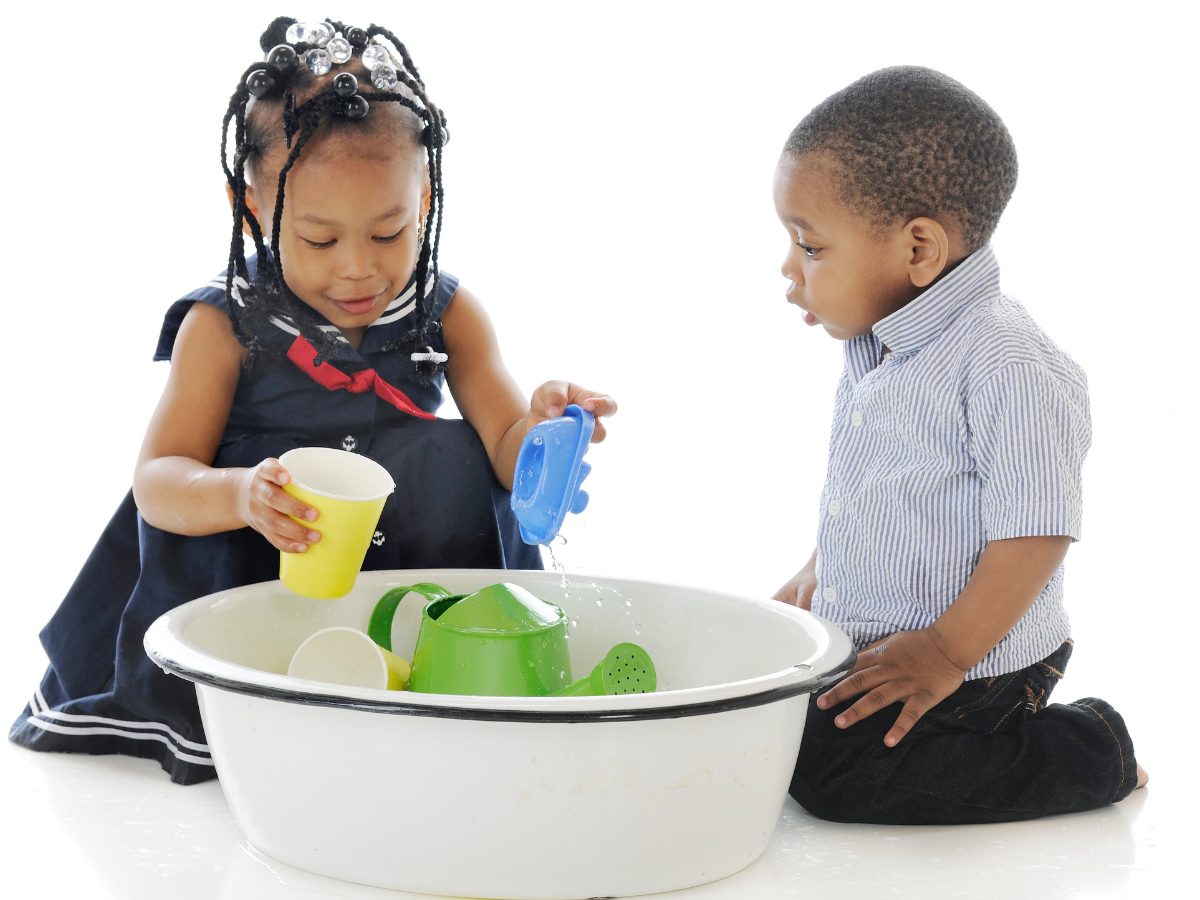Activity Inspiration: Sink or Float STEM Activity
Science education isn’t all beakers and lab coats. In fact, science for young learners looks a lot like giggles and playtime. This is because children learn through play. In fact, according to ECKLC “Infants and toddlers are natural scientists! They explore physical, natural, and social science anywhere and everywhere. They observe, are curious, and investigate to find out more about their world. They gather information as they solve problems.
Nevertheless, it’s critical to intentionally incorporate science education in early learning. This easy sink or float activity can be done using items you already have and is suitable for most early childhood to preschool ages.
Supplies
- Tubs or buckets for water. These could be emptied out toy bins or even large food storage containers.
- A variety of manipulatives that can get wet, such as:
- Balls
- Bottle caps
- Pinecones
- Pencils
- Crayons
- Water bottles (empty and full)
- Popsicle sticks
Instructions
Zero to three
Very young participants, such as those who are zero to three and in Early Head Start, will likely engage with this activity simply by dropping their items in the water, retrieving them, and doing it again. This is a wonderful way for them to learn! You can engage them even more by simply narrating what’s happening. When they drop something heavy: “Splash! The rock sank!” When something floats: “The straw floats! It stays on top!”
Preschool
- Begin by posing the question: What objects will sink or float? Asking a question is an important part of the scientific process.
- Next, have your participants sort their objects into two piles: items they think will sink and items they think will float. This is a way for them to form a hypothesis.
- Finally, it’s time to experiment. Invite your young scientists to begin exploring which of their objects will sink in the water and which will float
- Lastly, reflect. Ask the group to describe what they noticed. What objects sank, and what objects floated? Why do they think different objects floated while others sank?

